Helicher in common people is referred to as Cmin. This culture in our garden is a real part of the exotic vegetation of Australia and South Africa. But despite its thermal loss, it adapts perfectly to our climate. Her bright buds until late autumn give a sunny mood, and if they put them in the bouquet, they retain their beauty for several years. In this article we will introduce you to this unusual flower, with the rules of its cultivation and the secrets of the care of the helichrud.
Botanical Description Helicher Flower
With the onset of autumn cold, bright paints of the garden fade, because most colors have already been blowing. But just at this time it blooms the helichrum - multifaceted in its form and the color of the drywater, which is often called immorter. This name of the flower received for its ability to stand for a long time in a cut, and after drying - in Iquiban.
The flower of the helichrim language translated from Greek means "Golden Sun". Probably, he received such titles thanks to his terry buds with bright sunny shades - yellow, fiery, red, red.
In the natural area of \u200b\u200bgrowth, there are about six hundred species of Helihrizum, they can be met throughout Australia, Madagascar, and a number of European countries. Their genus includes various species that differ in the size of the flower. Culture is grown by several dozen ghelichrizum varieties. Most of them are low, but in small blooming, large inflorescences are blooming with a diameter of more than 2 cm.
Helicher belongs to a large astera family. In nature, it grows for several years, and in the culture heats up as an annals. The culture is growing in conditions of severe heat, while the moisture deficit is welcomed.
Botanical features of Helicrimum:
- Plant stalks are strong, branched, ribbed form.
- The root culture system is well developed, and confidently keeps the buds of different magnitude.
- Gelicurizum lanceal leaflets stroke, narrow, very elongated. Their surface is rough with silver tump.
- In the culture, the homing of Cmin grows throughout. There are varieties in the form of crawling shoots, up to 20 cm high, as well as high reprehension plants, up to 120 cm high. The diameter of inflorescence ranges from 5 mm to 7 cm.
- Helicurizum's inflorescences can be formed in the form of panicles, densely dyed with small flowerflowers or look like a bouquet of flat panels.
- Gelicherum from seeds is grown, less frequently applies a vegetative breeding method.
- Flowering of the Cmina falls for July-October depending on the variety.
Helichryum - variety of varieties and varieties
The immortality is so different that sometimes it is difficult to believe that all its species belong to one family. There are thick shrubs with small solar flowers on high stems, their leaves are narrow and very spiny. And there are also average helicrazums with a sophisticated flowers in the form of a Khokholka with a dozen flower, resembling a conventional chamomile or terry dahlia. Let's consider the most common types of Helicherizum in our latitudes with photos:
- Helichrum is a cherry - a thermal-loving look from the Alps. Prefers regular watering, southern garden sections and moderate fertilizer. This Cmin is valuable for landscape design with its creeping foliage, which quickly woves on the ground, boils through any fence or playfully hangs from the vases. Meter shoots are completely covered with oval form leaves. One side of foliage is bright green and smooth, and the other is velvet with silver coating. Flowers with small flowers of yellow color exclusively in the summer season. It is considered the most capricious in caring among other helicrics.
- Helicher brawl - a grassy plant with an empty shape of a bush, grows up to 75 cm. Inflorescences form multicolored petals from white to burgundy shade. The flower of this helicrizum is a terry, large (up to 6 cm in diameter). Dark green foliage, branched, ribbed structure. The view is very drought-resistant, loves an abundance of sunny color, but can bloom and in a half. It can do without frequent irrigation, but requires fertilizer.
- Gelhery Sandy is the only perennial who grows in our natural conditions. He is good with all sign as a shrub with dense stems and leaflets-spiny. Among the foliage is strongly distinguished by a blizzard in the form of a pancake with small bright yellow flowers that have a spicy aroma. It is found in the fields, on stony areas, in the gardens. Grow up to 15 cm in height, blooms in summer. Does not need painstaking care.
- Gelechrum Milford - Miniature height immortelle, which resembles a gray-green carpet, thickly dilated with white and pink colors. It easily covers stony areas, decorative slides and other embossed areas. It blooms almost all summer, sometimes capturing September.
Popular ghelichrizum varieties include:
- Helichrum Chico Red Dwarf - Annual small shrub tall up to 40 cm. Among the dark green foliage is the inflorescences of bright red, burgundy color with a yellow middle. Flower leaflets are a bit deployed, which creates the effect of terrain. Flowering falls on May-September. The immortelle looks beautifully in small pots or in baskets, suitable for creating borders.
- Helicherum Lotus - a reprehensive bush height 75-80 cm. It differs from other varieties with the tenderness of the paints of their buds. They overflow with all the shades of pink, cream, purple. It takes plenty of cold. The lotus grade grows well on the nutritious soil on the sunny plot. It looks flawlessly both in the flower beds and in alpinearias or cut.
- Helichernum Royal Mantle is a very popular Cmin, which is often grown for cutting and further creation of Ikebane. Middle-sized flower, pink, coral, beige color. Lancing leaves, light green. Flowers from July to cold weather, needs nitrogenous fertilizers and periodic watering.
- Helicher Silver Fog - used for landscaping arbors, veranda, low hedges. The plant allows long curly shoots that can be mastered by any support or just hang from baskets and suspended vases. In addition to the seed method, the reproduction of cuttings is successfully used. Long-term decorativeness of foliage is supported by fertilizers and sufficient irrigation.
Helichrum - Cultivation of seeds
Immorter, although it is a perennial in nature, in culture there is only as an annual herbal plant. Sowing seeds is considered a suitable method of reproduction.
Helicurizum Seed Seed Rules
Seeding seeds of Helicurizum in May-April. For this, small containers with prepared soil are used (a mixture of peat and river sand). Due to the soft and nutrient substrate, the seeds quickly board and rapidly grow. Helicurizum seeds are rather large, so do not need to be preparing.
The seeds are increasing over the soil, and from time to time the earth is sprayed with a spray gun. On top of the tank with seeds, the film is constructed or to bed glass. It creates a greenhouse effect, but the light is perfectly penetrating the spons.
Seed seeds can be immediately in the open soil in the first April days. For this, the sowing material is planted with a sowing step of at least 10-18 cm. For this, wells are formed, then 3-4 seeds fall into each fall, and then closed by film. If all seeds are sprout, they are breaking, leaving the corresponding distance between the sprouts. When the temperature stably stops at the mark + 15 ° C and higher, the film is removed.
Helicurizum Care
First, containers with planted seeds hold at home. After 12-15 days, the first signs of sex seed appear. From that moment on, it is important to open the film and spray seedlings with warm water. It is important to prevent an excess of moisture so that mold fungi does not appear. 2 weeks after the appearance of germs, the film is cleaned, and the rapid seedlings are divering.
Thanks to a strong and thick root system of the Helicher's flower, seedlings are quickly accepted and grows in new pots after picking. At first, the sprouts are better to leave at home or move to a greenhouse, eliminating the direct ingress of sun rays. Along with this, you do not need to forget to moisten the soil daily, once every two weeks to make fertilizers (complex or korovyan), loosen the near-break layer of the Earth.
Reproduction of perennial grades of helicrizum
Some perennial immortals of gardeners successfully determine the cuttings or the division of the bush, but this is a risky and time-consuming process that does not always end with success.
Modifying a bush of a long-term recession can be in such a way:
- In March-April, a bush is digging.
- The renewified knife is cut rhizome.
- The cut location is tightly covered with wood or activated carbon.
- The resulting bushes are planted back to the flowerbed.
Helicurizum hand drawn varieties:
- At the end of July, the upper shoots are cut off the bush.
- The length of each cutter must be 15-17 cm.
- Soil is prepared: 25% peat, 25% of the earth, 50% of sand.
- The soil falls asleep in the boxes, cuttings are immersed in it, film shelter is built.
- Then the daily watering and ventilation is carried out.
- After rooting, a transplant is carried out on the flower.
Helichry, landing and care in open soil
The correctly chosen place for landing and rational care will provide active growth and abundant flowering of any grade of Helicrim.
Creating the necessary conditions for the cultivation of helicrizum
Immorter arrived to us from the subtropical climate, so you need to create similar conditions for it. The landing place should be sunny, spacious, without stagnation of groundwater and excess clay in the soil. The root system of helicrizum needs a full-fledged aeration, so the soil should be light, a little dry.
Helicher, planting on the flower
Helicurizum seedlings landing in open ground is carried out in April-May. Saplings are planted at a sufficient distance among themselves. For dwarf varieties, the distance is 15-25 cm, and for tall dryers - at least 40 cm. The root system is developing rapidly, so it is not necessary to process it with growth stimulants. First, the holes are digged, a mixture of peat and earth is stacked on the bottom, then the plants are immersed to a depth of 8-10 cm. The flowering will start closer to mid-July.
Helichrum - garden care
Immorter is difficult to call a whimsical plant. It successfully flowers in dry ground without a generous watering, while other flowers in such conditions are easily dying. But, nevertheless, so that the foliage fastened, and the inflorescences pleased with their size and brightness, you need to take into account some rules for the care of this exotic drummer.
Watering and feeding Helihrizumum
Helichrum does not tolerate excesses: whether it is excessive watering or fertilizer. Therefore, it is necessary to moisturize the soil around the flower only on very hot days when the rains do not go for a long time.
It is necessary to monitor the state of the soil. It should frighten and pour out on time. This ensures the inflow of oxygen roots, which directly affects the period and quality of flowering.
For feeding immortals, any organic or mineral fertilizers are suitable. You need to make them no more than two times per season.
Helicurizum pests and diseases
Cmin rarely sick, but often damaged by pests. Especially love to eat the leaves of the Helicrizum of the caterpillars of the reict, and less often - the wave. To get rid of uninvited guests, plants are processed by system means.
The only disease that destroys drywalk is a white rust. But it is easy to destroy Bordosskaya 1% liquid.
Geliharizum seed collection
Ensure yourself with sowing material is very simple. In August, they sleep light brown seeds of oval form. To collect them, you need to leave a few inflorescences are not torn and give them to plant. After 8-9 days, the seeds will easily fall out of the flower. Then the seeds are dried and stored in paper bags. Seed germination is preserved for about three years.
Sing and drying Helihrizumum
The drywater is capable of maintaining the brightness of the paints up to 4 years under the condition of the right drying. Cooling infloresions need to be carried out immediately after the disclosure of buds by 1/3. Slices with flowerfolds down are suspended by several pieces in the beam, the leaves are removed. After a couple of days, the buds fully open and retain their views for a long time. If you cut the flowers after full disclosure, while drying all the petals will completely open, start to fall out seeds and decorative disappear.
For drying, any room with dry air without sunlight is suitable. Within 30-40 days, the flowers lose completely all moisture. After that, you can proceed to the formation of dry Ikebane.
Wintering perennial immortals
Perennials after flowering is removed most of the above-ground hat. Without prejudice, they carry freezing to -20 ° C. At the same time, it is undesirable to cover them too much because the rhizome plays and begins to rot. In the regions where the temperature can fall below this mark, it is better to cover the helium a thin layer of foliage foliage or transplant the plant in a pot and pick up home for the winter.
Helichrim, photo in landscape design
Decorative plantings of medicinal herbs are simply impossible to imagine without helicrizum. It is beneficial to stand out against the background of lavender, chamomile, as well as sage, rosemary. These flowers bloom longer than all and not wither.
The immortals and to create an alpine slide, especially with a large number of stones. For these purposes, low-grade varieties and milfowded varieties that curtains create are suitable. He harmonizes drywalk with Iberis, Eshcholce, greasy.
Gelicrim's creeping varieties are planted in a basket or large vases. Their hanging stems, covered with color, decorate garden structures, verandas, street window sills.
Helichryum - "Sunny" decoration of any garden. It does not require a long care, longly blooms and is perfect in a slice. But his main thing is to dwell, without losing its primary appearance. Having put it in the garden, you can decorate the alleys, zoning the flower beds, create incredible flower arrangements, without applying efforts to grow.

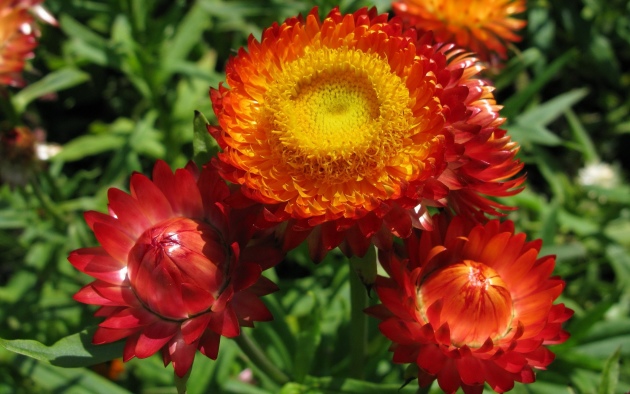
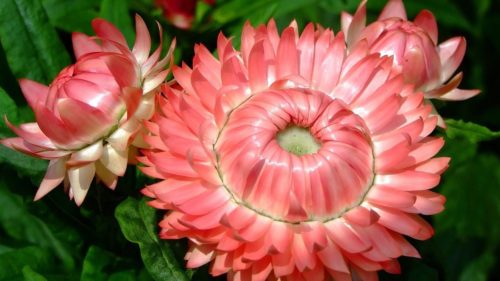
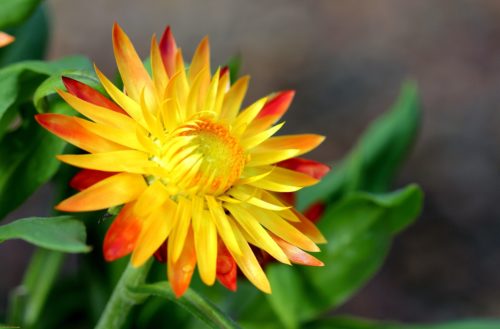


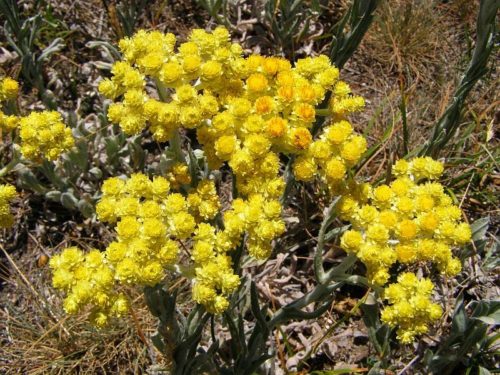
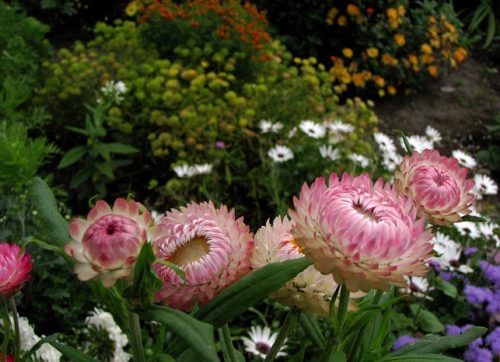
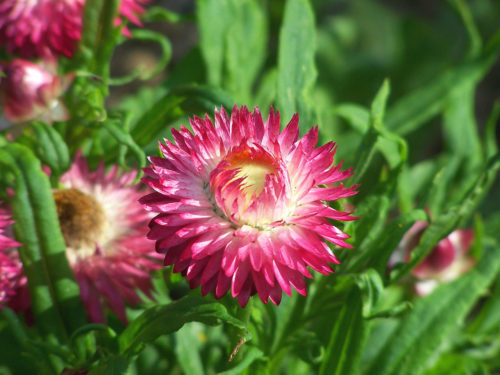
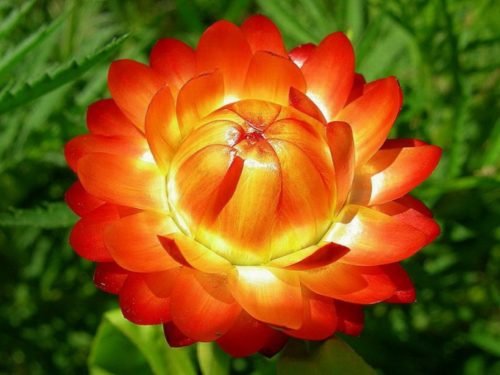
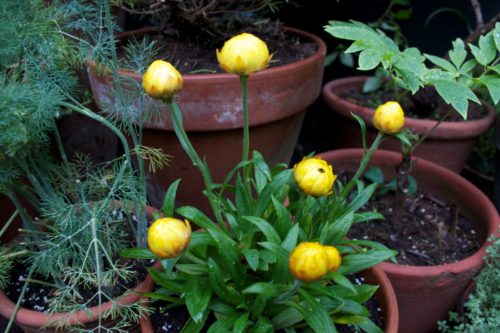
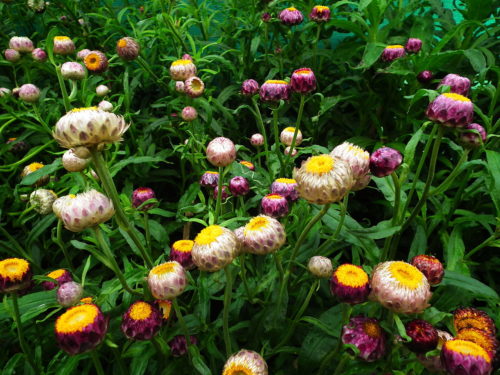
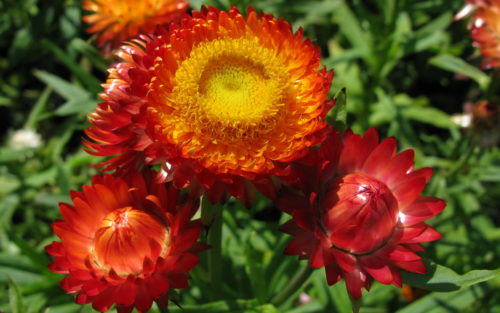
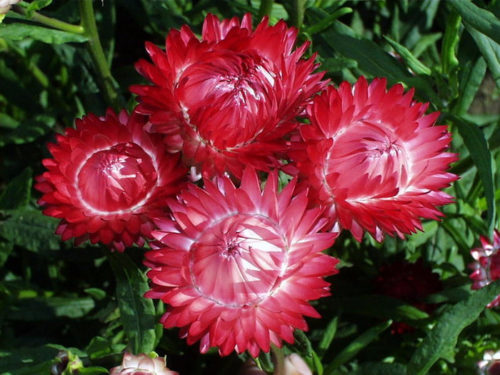
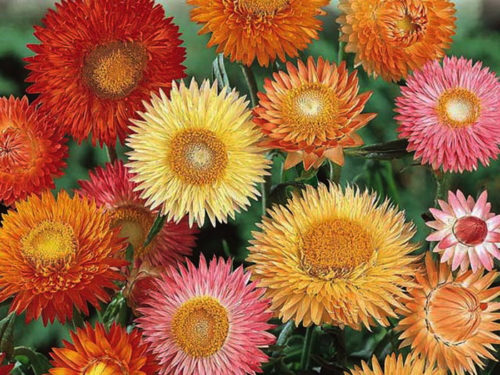
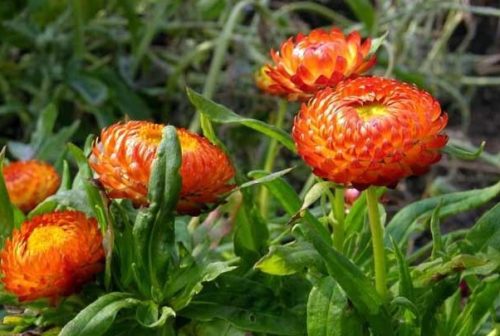
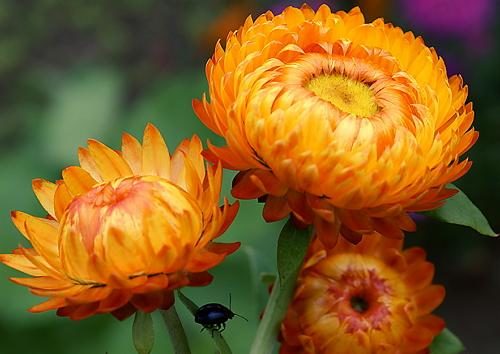
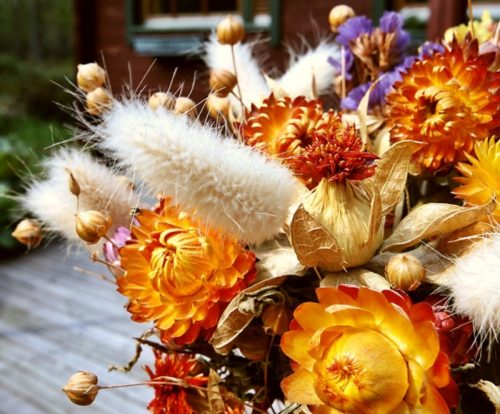
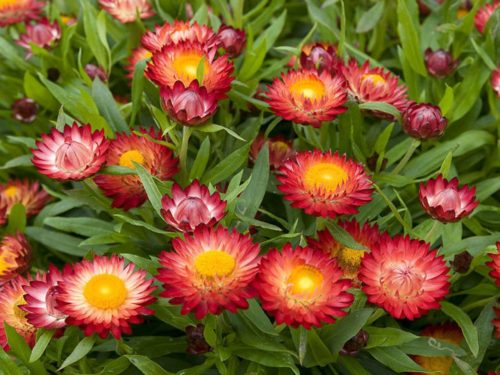
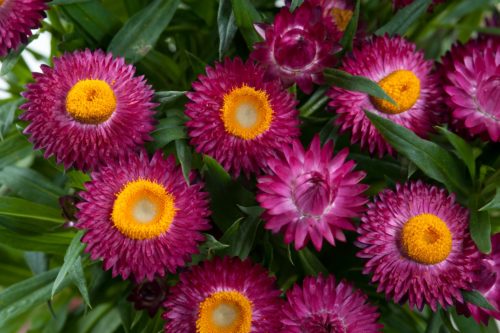
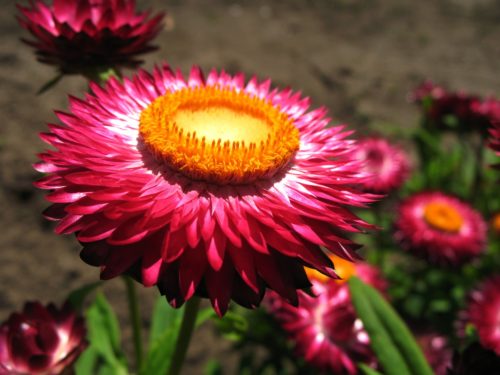
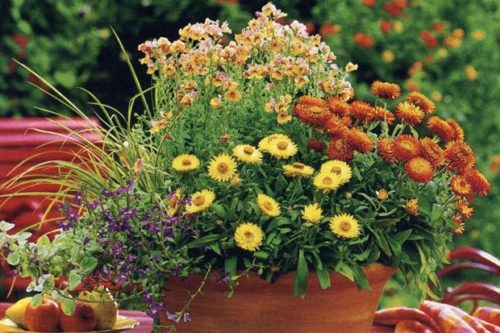
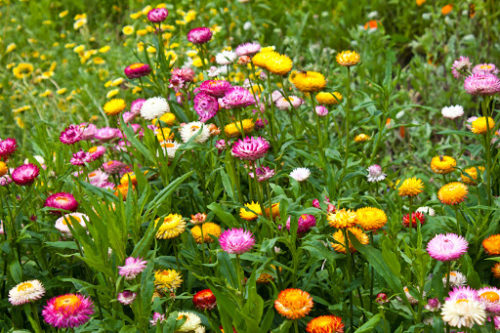













 Start a discussion ...
Start a discussion ...